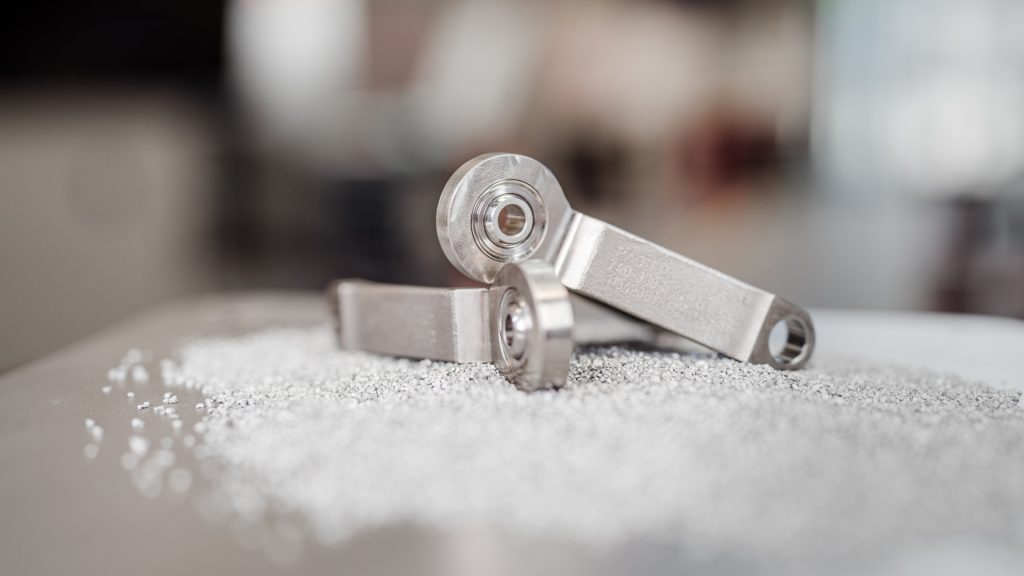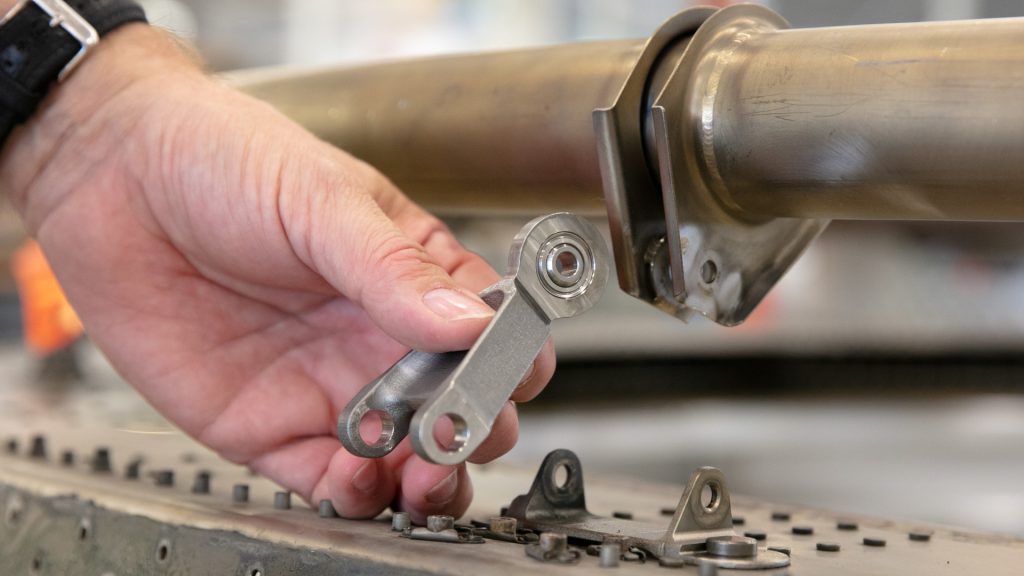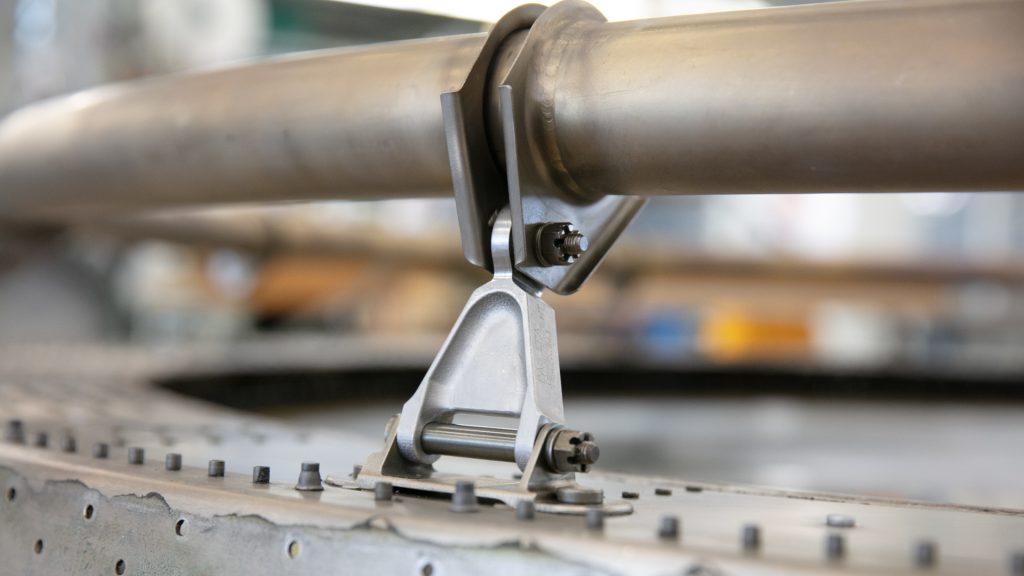MRO service provider Lufthansa Technik and Premium AEROTEC, an Airbus subsidiary, have broken new ground by developing the world’s first 3D printed load-bearing metal part approved for use on an aircraft.
Created at Lufthansa Technik’s Additive Manufacturing Center, the landmark spare part is an ‘A-Link’ for use in the IAE-V2500 engine’s anti-icing system. The two-shaft turbofan engine powers Airbus’ A320 family of aircraft.
The load-bearing component is the first of its kind to be aviation-certified by the EU Aviation Safety Agency (EASA) and will be series 3D printed by Premium AEROTEC at its production site in Varel, Germany.
Soeren Stark, COO at Lufthansa Technik, said, “We have been producing components for the aircraft cabin, the vast majority of which are made of plastic, using 3D printing for years. Now we are able to demonstrate that structurally relevant metal parts for use outside the cabin can also be manufactured additively and approved for flight operations.”

A new age for the A-Link
Inside the IAE-V2500’s inlet cowl, a set of nine A-Links is used to secure a ring-shaped hot air duct in place, which helps prevent ice buildup during flight. They’re made of titanium and often see temperatures of up to 300°C. Due to the vibrations experienced in the air, these A-Links commonly wear at their mounting holes so they need to be replaced by spare parts every few years.
Traditionally, the part is manufactured via a metal forging process to ensure the mechanical performance necessary for end-use. By leveraging laser powder bed fusion (LPBF) instead, Premium AEROTEC and Lufthansa Technik have eliminated the need for any tooling whatsoever, yielded greater material savings, and even lowered overall manufacturing costs.

Surpassing conventional manufacturing
When it comes to metal additive manufacturing, the mechanical properties of a part are heavily impacted by printing parameters so process qualification is a complex but crucial venture. To qualify the A-Link process, Premium AEROTEC conducted a “large number” of print tests using prototype specimens to fine-tune the build for reliability and repeatability. There will always be the concern of dimensional variability between identical parts in additive manufacturing but the EASA has deemed the A-Links safe in this regard.
One of the aims of the testing was to match the performance of the forging process but the firm managed to 3D print the A-Links with superior tensile strength to their conventionally manufactured counterparts. Impressive.
As part of the certification process, Lufthansa Technik expanded the capabilities of its EASA Part 21/J development facility to also include 3D printed metal parts. On the other hand, the project also marks the first time Premium AEROTEC has supplied printed series components to a customer outside the Airbus Group. The first of the 3D printed A-Links will be integrated into the Lufthansa fleet in due course.
“Premium AEROTEC is an international pioneer and technology leader in the additive manufacturing of aerospace components. Our company has already been applying this technology in the series production of complex structural components since 2016,” said Dr. Ulrich Weber, COO at Premium AEROTEC. “I am very pleased that in cooperation with Lufthansa Technik we can now once again demonstrate our comprehensive expertise in 3D printing.”
Looking ahead, the partners intend to one day take the A-Link a step further and redesign the part’s geometry for additive manufacturing, further increasing material efficiency while preserving strength and function.

Although load-bearing parts have been a dream until now, the 3D printing of flight-ready components in aviation and aerospace is no new feat. Just this month, Italian defense contractor Leonardo qualified Desktop Metal subsidiary Aidro as a supplier of 3D printed parts for its helicopters. Since gaining accreditation, the firm has begun working with Leonardo to create flight-ready parts for its rotorcraft, a lineup that includes civil and military helicopters.
Elsewhere, GE Aviation recently became the first company to offer metal additive manufacturing for commercial jet engine component repairs. Specifically, the firm’s Loyang facility in Singapore has become the first MRO facility worldwide with approval to apply 3D printing in this manner.
Subscribe to the 3D Printing Industry newsletter for the latest news in additive manufacturing. You can also stay connected by following us on Twitter, liking us on Facebook, and tuning into the 3D Printing Industry YouTube Channel.
Looking for a career in additive manufacturing? Visit 3D Printing Jobs for a selection of roles in the industry.
Featured image shows the 3D printed A-Link. Photo via Premium AEROTEC.


